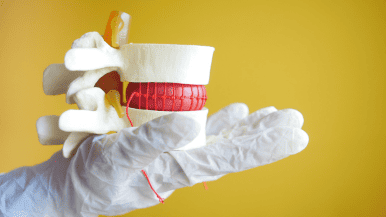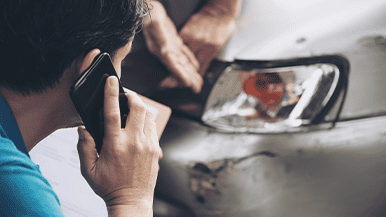 Bankart repair surgery is a minimally invasive surgery to repair instability and restore function of dislocated shoulders. To better understand what a Bankart tear or lesion is, an overview of the shoulder is needed. The humeral head (ball of the shoulder joint) is centered in the glenoid (the socket of the joint), which stabilizes the shoulder. If the shoulder becomes dislocated, it can tear the glenoid labrum and ligaments that help reinforce its structure. The goal of Bankart repair surgery is to re-attach the torn labrum and ligaments to the tip of glenoid from which they were detached.
Bankart repair surgery is a minimally invasive surgery to repair instability and restore function of dislocated shoulders. To better understand what a Bankart tear or lesion is, an overview of the shoulder is needed. The humeral head (ball of the shoulder joint) is centered in the glenoid (the socket of the joint), which stabilizes the shoulder. If the shoulder becomes dislocated, it can tear the glenoid labrum and ligaments that help reinforce its structure. The goal of Bankart repair surgery is to re-attach the torn labrum and ligaments to the tip of glenoid from which they were detached.
With Bankart repair surgery from Advanced Orthopaedic Centers, patients typically go home the same day of surgery.
Symptoms of Bankart tear or lesions are:
- Severe shoulder pain
- Repeated shoulder dislocations
- Repeated instances where the shoulders give out during activity
- Sensation of the shoulder feeling loose, slipping out of the joint or “hanging there”
During the minimally invasive Bankart repair surgery, your surgeon will make small incisions in the front and back of the shoulder. The surgery is considered minimally invasive thanks to the small incisions resulting in less discomfort and shorter recovery time. The surgery is performed using a small fiberoptic camera (an arthroscope) and other small instruments.
Small holes are drilled near the detached labrum, once it has been cleared of loose particles. The surgeon will then attach sutures to the labrum and pull them tightly across the anchors so the labrum can be reattached to the glenoid. Once the ligaments are firmly in place, the incisions are then closed with small bandages and the surgery is complete. Recovery should be complete three months following surgery.
Who is a Candidate for Bankart Repair Surgery?
Candidates for Bankart repair surgery are patients suffering from chronic, severe shoulder instability who have not found relief from medication, physical therapy or other nonsurgical techniques.
Bankart lesions or tears can sometimes cause recurrent shoulder dislocations, which may cause further damage to different areas of the shoulder. For those individuals that continue to experience dislocations, Bankart repair surgery is often a good decision.
What Should You Expect After Bankart Repair Surgery?
This procedure is typically performed arthroscopically at an outpatient surgery center, meaning patients go home several hours after the surgery has been completed. The first few days following surgery may be painful, but is typically managed by minimal amounts of pain medication. After surgery, the shoulder may be immobilized with a sling. The sling is worn for at least the first two weeks after the operation. It should be removed when bathing/showering, or to do exercises. The sling is worn to sleep, and when in big crowds for at least four weeks after surgery.
Patients will be given specific instructions for at-home care. Seven to 10 days after the surgery, patients should have a follow-up with their surgeon. At this follow up, the surgeon will review the surgery and most likely suggest it is time to schedule an appointment with a physical therapist. Physical therapy helps to improve physical strength, range of motion, and assists with normal activities of daily living.
For the first four to six weeks following surgery, the focus should be on rehabilitation and regaining as much range of motion as possible (keeping surgical repair in mind). Depending on the progress of the patient, the next four to six weeks the focus will be on increasing the strength of the shoulder. As the strength of the shoulder improves any pain should decrease. Patients should visit their physical therapist six-eight times over a period of 12 weeks.
What are the Results of Bankart Repair Surgery?
Typically, when patients are fully healed from Bankart repair surgery, they report little to no pain and inflammation, a return to normal upper arm strength and a range of motion comparable or exceeding levels prior to surgery.
Generally, patients are able to perform daily gentle activities with the operated arm starting two to three weeks after surgery. Unstable shoulders may become stiff after surgery so early (gentle and protected) motion is often suggested. Patients can drive after two weeks following surgery only if the shoulder can be used comfortably, and if the car has automatic transmission so the shifting of gears is not required.
As with any surgery, the success of surgery will depend and vary by patient.



